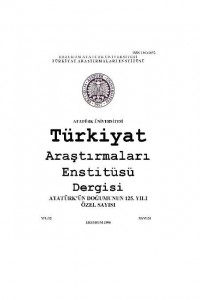TRABZON / BATUM EYÂLETİ VALİLERİ (1755–1795) / Governments of the Province Trabzon / Batum (1755-1795)
Abstract
ÖZET
Karadeniz Bölgesi’nin en önemli şehirlerinden birisi olan Trabzon, 1461’de Osmanlılar tarafından fethedilmiştir. Şehzade şehri olarak ün kazanan Trabzon, sancak adı altında Rum Eyâleti’ne daha sonra da Erzurum Eyâleti’ne bağlanmıştır. 1580’de kurulan Batum Eyâleti’ne bağlanan Trabzon Sancağı, daha sonra bu eyâlet ile birleştirilmiş ve Trabzon / Batum Eyâleti adını almıştır. XVIII. yüzyılda Trabzon Eyâleti’nde görev yapan valiler, iç isyanlar ve Rus harpleri sırasında önemli rol oynamışlardır. Bu valilerden en dikkat çekeni Canikli Ali Paşa’dır. Onun zamanında bölgede birçok karışıklıklar meydana gelmiştir.
Anahtar kelimeler: Trabzon, Batum, Canikli Ali Paşa, XVIII. yüzyıl, Osmanlı-Rus harpleri
ABSTRACT
Trabzon, one of the most important cities of the Black sea Region was conquered in 1461 by Ottomans. Becoming famous as a city of Sehzade cities, Trabzon was first connected to the province of Rum as a Sandjak, and then to the province of Erzurum. Trabzon which was connected to the province of Batum in 1580 was later combined to this province and was named as the province of Batum. Governments ruled in the 18th century in the province of the Trabzon / Batum had important roles during the civil revolts and Russian wars. The most significant one among them is Canikli Ali Pasha. In his time, there happened a lot of revolts in the region.
Key words: Trabzon, Batum, Canikli Ali Pasha, 18th century, Ottoman-Russian wars
Keywords
Details
| Primary Language | tr; en |
|---|---|
| Journal Section | Makaleler |
| Authors | |
| Publication Date | February 28, 2010 |
| Published in Issue | Year 2006 Volume: 12 Issue: 31 |


